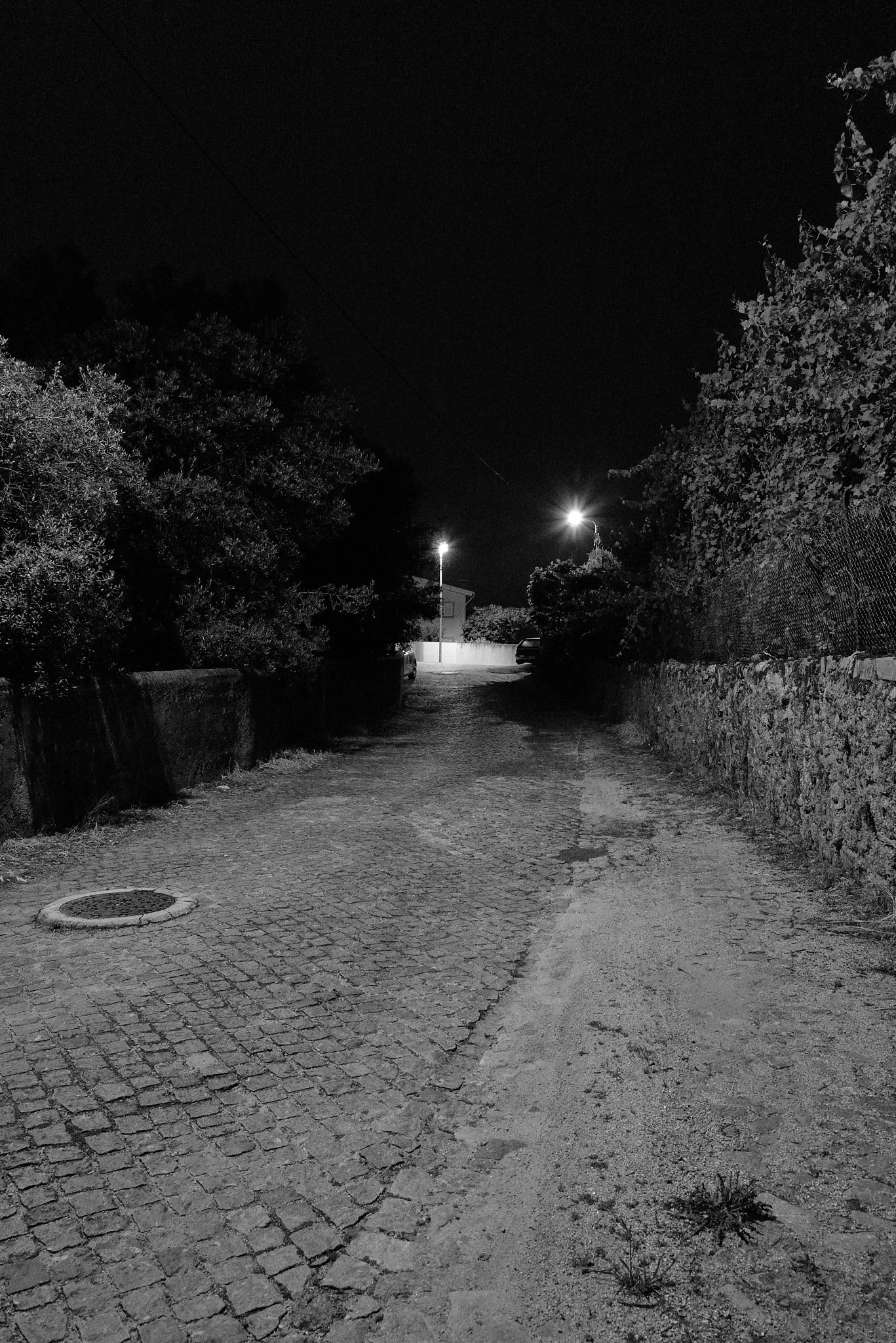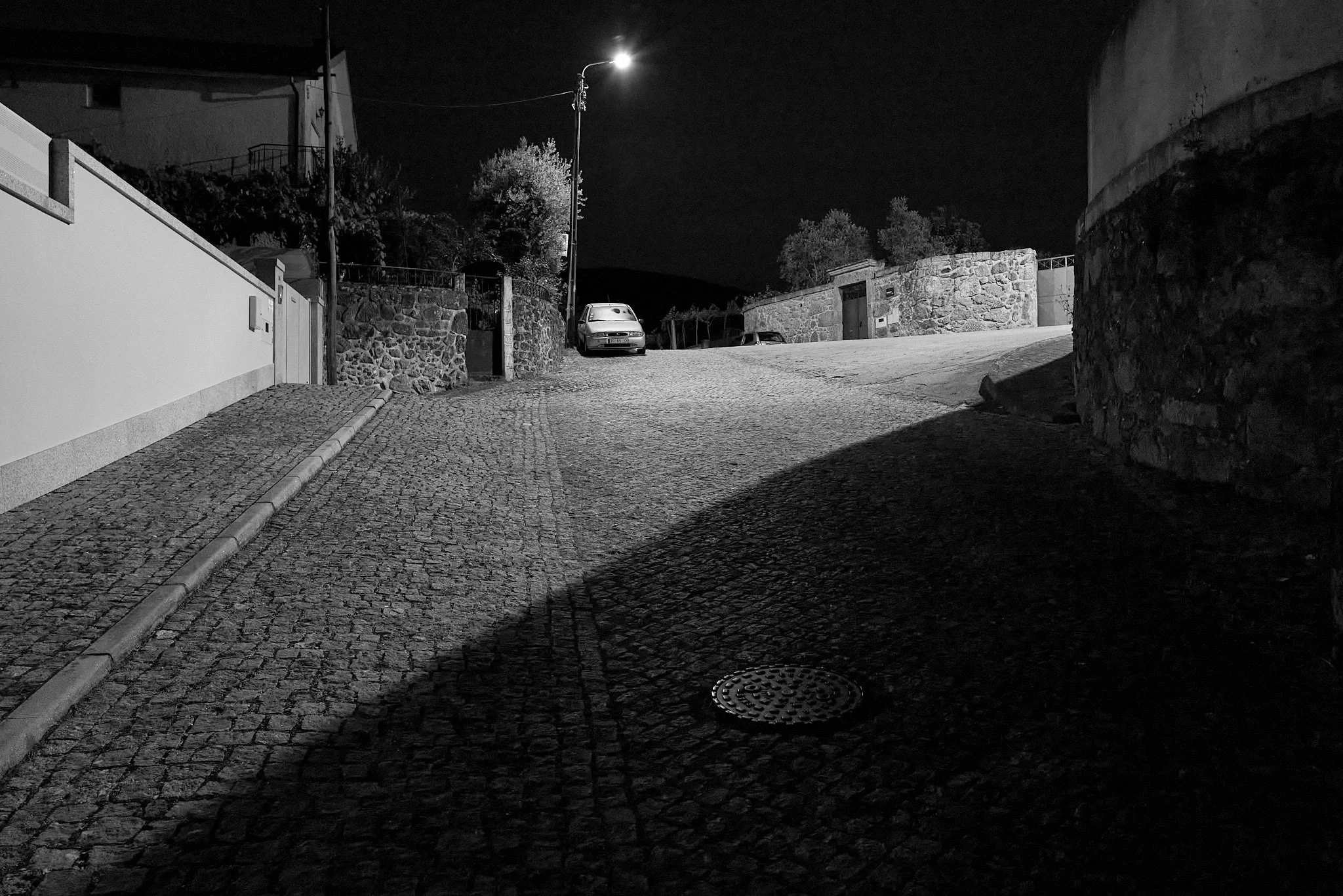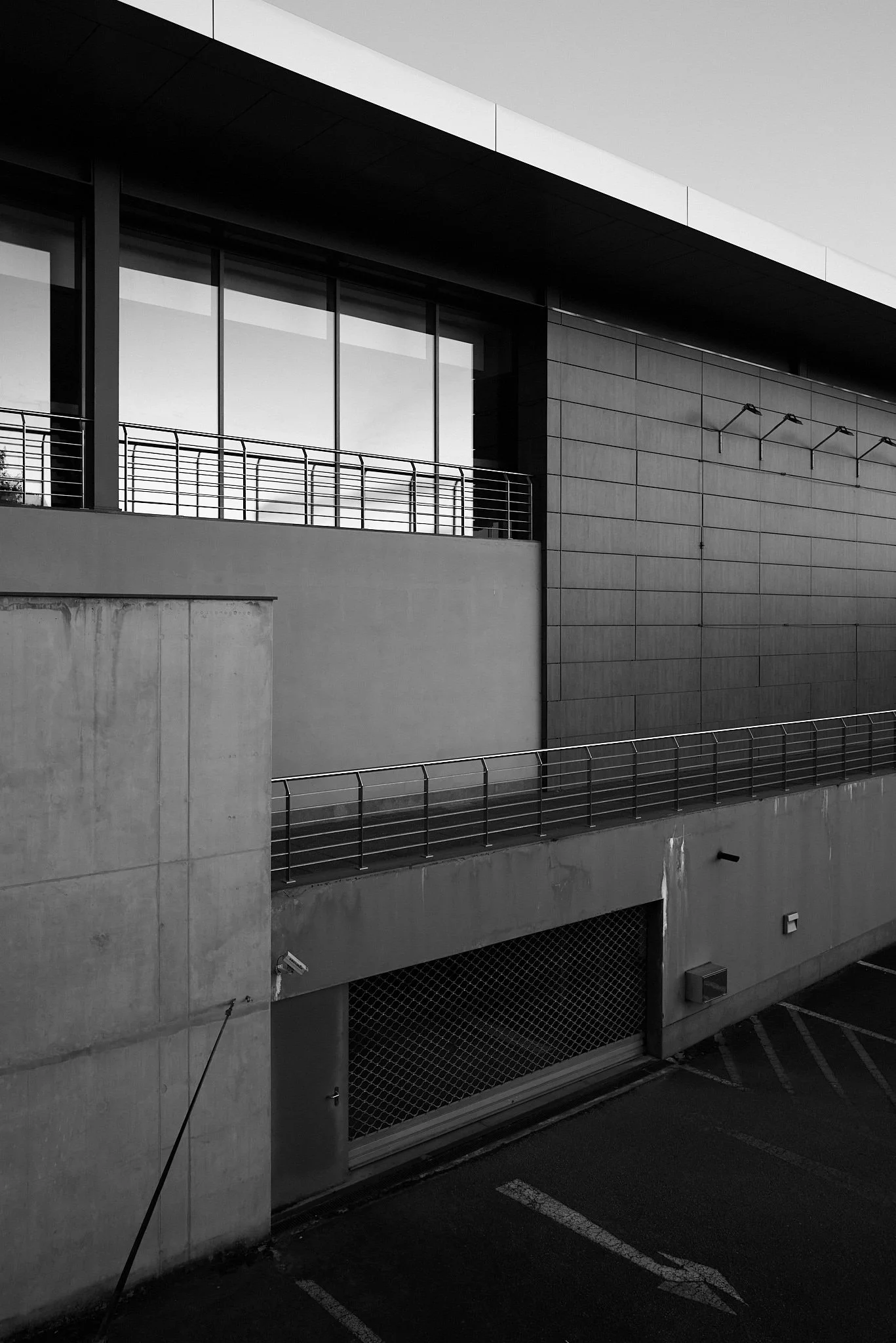Morning Walk Shots 7 - The End
This is probably the end of this series and time to move my photographic thinking onto other things. It doesn’t mean I’ll necessarily ever do photographs like this again, but probably not as a series nor as persistently as I did when I was walking around by myself before sunrise while Ann was away.
The last few mornings of my mini-project found me taking different routes just to get a new dose of subject matter. I think having returned to the same places again and again (i.e., taking the same morning walk) and my experimenting to see what the camera could do paid off because I think the images from “new” locations were consistently better than my first night photography wanderings.
Places can look so different at night, even when you’re familiar with them. And the darkness really forces you to to work with more fundamental shapes and lightness/darkness.
Details come across differently in black and white than in color. Add the darkness of night to it, and more often than not you get more of a sense of textures than details. But that too can be put to good use.
One of the routes took me through an older small neighborhood where the old houses are really clustered together. Even at night you can sometimes manage a photograph that conveys a sense of space.
And occasionally, even fairly mundane things such as the old communal wash area can become an interesting subject.
As you can tell from the various photographs, even then I was having to struggle with morning light towards the end of my walks. That introduced a whole different set of issues to manage photographically. But at least on the cloudy days, the skies retained some degree of texture.
One of the mornings I got a fairly late start (admit it, every once in awhile you sleep in a bit too, even on a work day), and I decided to just wander around our neighborhood of comparatively newer row houses. That let me start playing a bit with geometric forms because everything new around here has a very modern look, even if the materials appear to age quickly.
And when you miss very dimensional architectural detailing with multiple different light sources (read: street lights), you can get a real mix of forms and shadows.
Even some of the older structures offered some interesting details.
And on one of my walks I came across another cat! This is where the 47 megapixel sensor of the Q2MR really proved its worth. All I had to do was point and focus from where I was (I didn’t want to scare the cat away given its pose). It didn’t matter very much that this is a tremendous crop from the image that was captured by the sensor. At least on a monitor it holds up!
I think my experimenting with the Q2MR during the period Ann was away was a good project. I learned about its amazing low-light (high-ISO) capability, as well as the ability to crop and to photograph with room to allow for corrections such as vertical lines.
I learned that it allowed me to capture, in black and white, subtle qualities and nuances conveyed by different light conditions and different materials.
And I learned that it is a joy of a camera to use. I have to photograph with it in a very different way than my Fuji X-Pro 2, but that’s ok. It’s still largely manual and . . . just using the manual lens to focus is wonderful.
I guess it’s time to start putting it to work in more normal conditions.
Which is a good thing because our first Portugal guests are arriving today!










